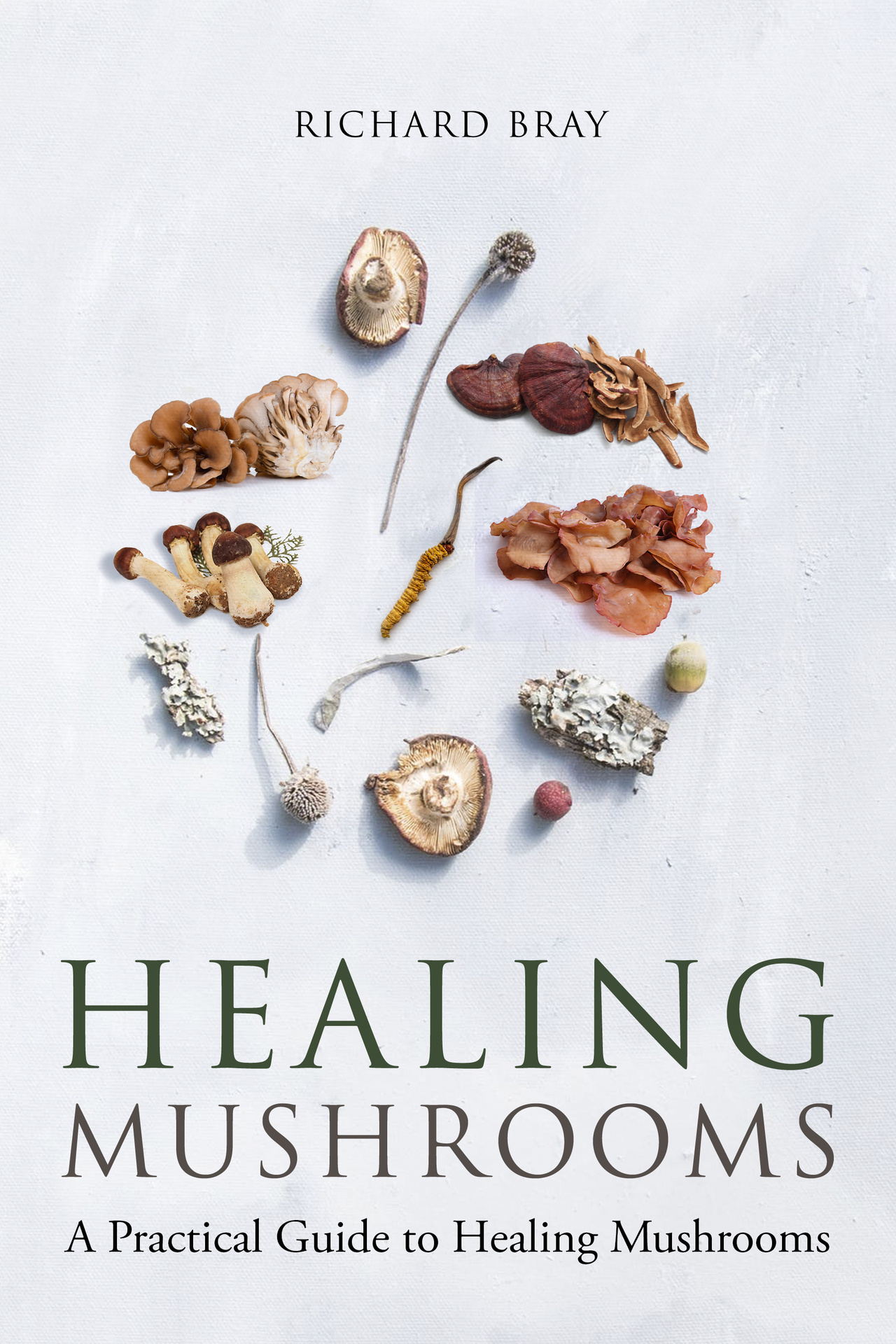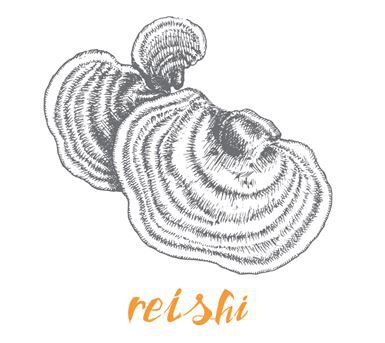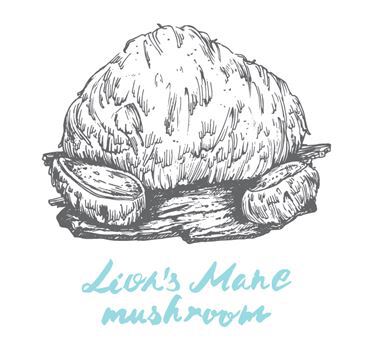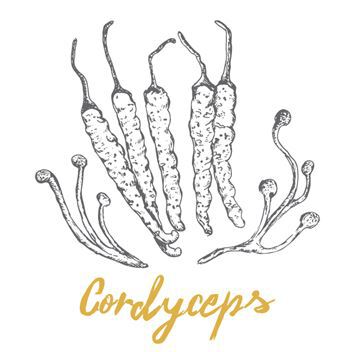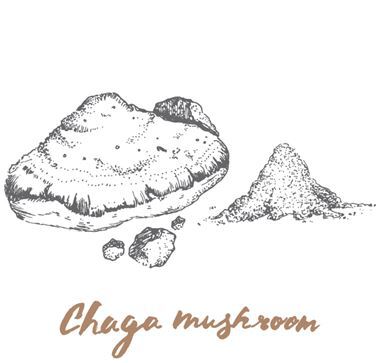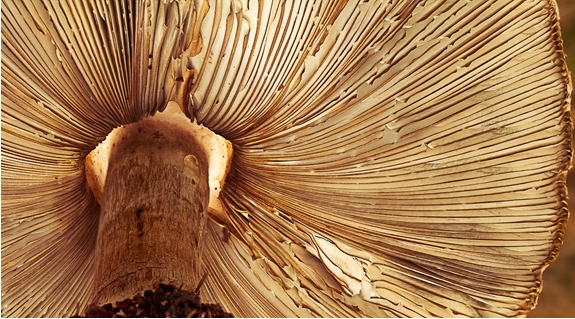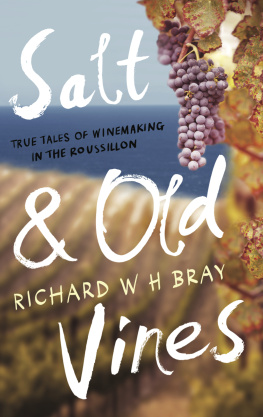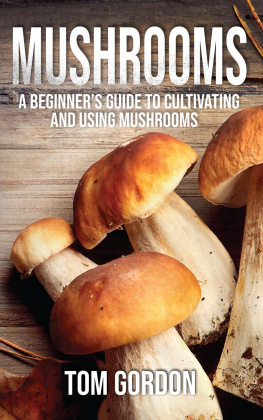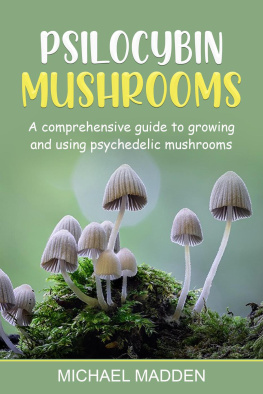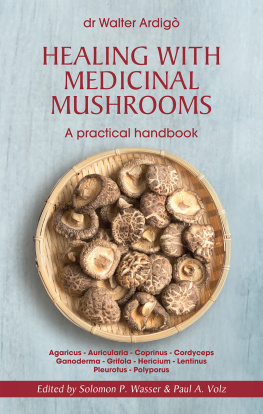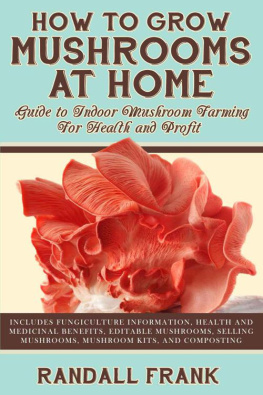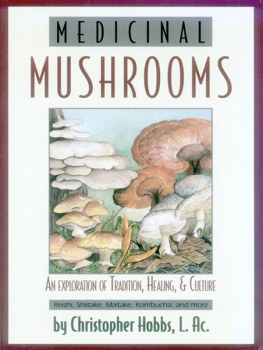MEDICINAL MUSHROOMS
Healing Mushrooms for Immune Support: Improve Your Memory, Reduce Inflammation, and Fight Cancer
RICHARD BRAY
DISCLAIMER
The information presented in this book is meant for educational purposes and does not replace professional medical advice from a health care practitioner. This text is not meant to diagnose or treat diseases. Mushrooms may cause adverse reactions; being included in this text does not mean they are safe for all to consume. The author and publisher of this book do not accept liability or responsibility for the use of mushrooms in treating health or medical issues. A person should always consult a health care practitioner before taking supplements and should disclose any currently being taken.
This is by no means a comprehensive guide to all potential medicinal mushrooms. It is a compilation of current research and recommended usages and does not cover all possibilities or concerns. There is a lot more research to be done, specifically around the best ways to ingest mushrooms and appropriate amounts. If the specific information you are looking for is not contained in this book, it likely means that there is not enough research yet or not enough evidence to support use. For example, many studies show that a specific mushroom has potential in treating cancer. Yet there are no resources available as to how much of that mushroom is needed to fight cancer effectively in humans.
This is still an area of immense study, and all the answers are not available as of yet.
TABLE OF CONTENT
CHAPTER 1
THE POWER OF MUSHROOMS
F or thousands of years, mushrooms have been used as food and medicine. There are over 14,000 species of mushrooms, and approximately 270 of them are identified as having potential medicinal benefits. These benefits include anti-cancer, anti-inflammatory, immune-system, depression relief, cholesterol inhibiting, and neurodegenerative disease treatment.
Because of the large number of mushroom types and the biological intricacies of each, there is no overarching statement that can be applied to them all. Each mushroom stands on its own with its specific medicinal properties. Some mushrooms are disease-specific, while others have more broad applications.
Our knowledge of these mushrooms mostly comes from the East Asian traditional medicinal practices that have been using them for centuries to assist in all manner of ailments, to prevent sickness, and even to cure diseases. Indigenous cultures across the world have long known the healing powers of mushrooms. Western medicine has only recently begun expressing interest, and there are still a lot of clinical studies that need to be done to prove scientifically that which ancient peoples have known for a long time.
The first major Western discovery of powerful fungi was when Alexander Fleming accidentally found penicillin in 1928. Several current pharmaceutical medicines use mushroom or fungi sources in their compounds. Research is ongoing and increasingly prolific around mushrooms and their potential in treating serious diseases, like cancer, diabetes, and heart disease.
The interest in mushrooms as medicinal vehicles has reached such epic proportions because our current (Western-style) medical system is struggling to provide safe and effective care. So many medications have undesirable and often serious side-effects. All too often, the drug a person takes for one disease causes another one. Mushrooms, over millennia, have been used to treat symptoms, cure diseases, and improve the overall quality of life. Current research is finally beginning to catch up and demonstrate the true value of these natural commodities.
CHAPTER 2
EARLY USE OF MEDICINAL MUSHROOMS
F or thousands of years, people across the globe have been using mushrooms for their medicinal properties. The uses range widely and are as varied as the types of mushrooms themselves. Hippocrates advocated the use of the amadou mushroom ( Fomes fomentarius ) as an anti-inflammatory. Reishi ( Ganoderma lucidum ) was used as far back as the 5 th century by the alchemist Tao Hongjing. Even Otzi, the Ice Man, who lived around 3300 BCE, carried mushrooms in his pouch as he attempted to cross the Alps. Remnants of amadou and birch polypore, which is used to plaster wounds and fight infection, were discovered with his frozen body. Chaga has been used in Siberia and parts of North America for hundreds of years. Maitake is referenced as a treatment for stomach issues and to calm nerves in a Chinese text by Nong Ben Cao Jing, which was written between 200 BC and 200 AD.
In ancient Egypt, mushrooms were thought to be the son of gods. The belief was that mushrooms arrived on lightning bolts and were only for the nobles and leaders to eat. Aztec culture ascribed sacred value to mushrooms. There, similar to Egyptian culture, the mushrooms were referred to as the flesh of gods. They were eaten during holy rituals.
Cultivation of mushrooms for culinary and medicinal purposes started thousands of years ago, primarily in Asia. Flammulina velutipes was cultivated as early as 800 AD and Lentinula edodes (Shiitake) around 1000 AD.
CHAPTER 3
BENEFITS OF MEDICINAL MUSHROOMS
T he main benefit of medicinal mushrooms is their natural ability and the overall safety in using them. The side-effects with some are few and often very specific. Compared to the common medications that are prescribed by Western doctors, the side-effects are negligible. The main issue with current medical drugs is not that they don't work; it is that they cause a myriad of other issues with long-term use. A person may start with one health issue, take prescribed medication for it, and end up with 2-3 other health problems due to the medication. This is not always a good strategy for treatment.
The mushrooms being studied for medicinal uses are generally safe to eat with minimal side-effects if any. Not all mushrooms are safe, and not all are medicinal, so it is important to follow the research and only ingest those known to be beneficial.
A second huge benefit to mushroom medicinals is that they cost less than other comparable medicines. If a person is educated in foraging, the mushrooms are free. Some mushrooms, like Pleurotus ostreatus (Oyster mushrooms) and Agaricus bisporus (Button mushrooms), are available for a minimal cost at the grocery store. There are types of mushrooms, some in this list, which are more expensive due to their rarity or the inability to commercially cultivate them. A lot depends on location. A person in Asia will experience less trouble and likely spend less on acquiring many of these mushrooms because they are popular and readily available.

